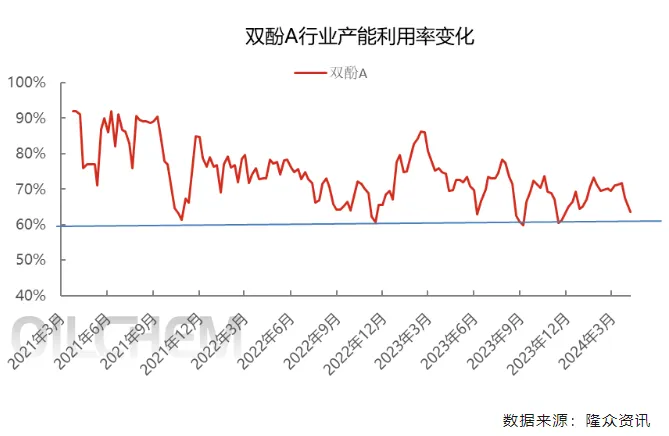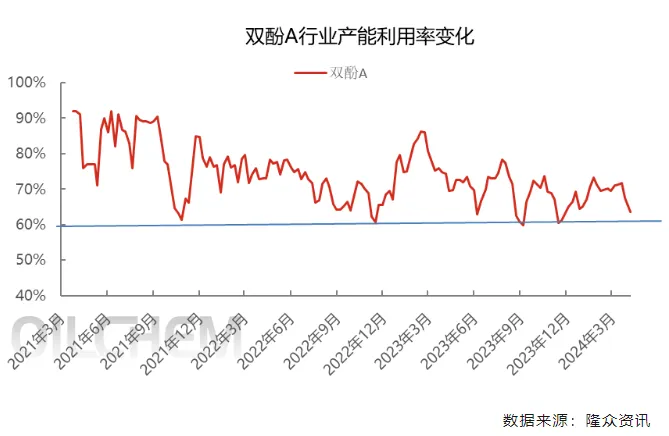1、 Market Action Analysis
Since April, the domestic bisphenol A market has shown a clear upward trend. This trend is mainly supported by the rising prices of the dual raw materials phenol and acetone. The mainstream quoted price in East China has risen to around 9500 yuan/ton. At the same time, the sustained high operation of crude oil prices also provides upward space for the bisphenol A market. In this context, the bisphenol A market has shown a recovery trend.
2、 The decrease in production load and the impact of equipment maintenance
Recently, the production load of bisphenol A in China has decreased, and the prices quoted by manufacturers have also increased accordingly. From the end of March to early April, the number of domestic bisphenol A plant shutdowns for maintenance increased, leading to a temporary shortage of market supply. In addition, due to the current loss making situation of domestic factories, the industry’s operating rate has dropped to around 60%, reaching a new low in six months. As of April 12th, the production capacity of parking facilities has reached nearly one million tons, accounting for about 20% of the total domestic production capacity. These factors together have driven up the price of bisphenol A.
3、 Downstream sluggish demand constrains growth
Although the bisphenol A market is showing an upward trend, the sustained downturn in downstream demand has constrained its upward trend. Bisphenol A is mainly used in the production of epoxy resin and polycarbonate (PC), and these two downstream industries account for almost 95% of the total production capacity of bisphenol A. However, in recent times, there has been a strong wait-and-see sentiment in the downstream PC market, and the equipment may undergo centralized maintenance, resulting in only a slight increase in the market. At the same time, the epoxy resin market is also showing a weak trend, as the overall terminal demand is sluggish and the operating rate of epoxy resin plants is low, making it difficult to keep up with the rise of bisphenol A. Therefore, the overall demand for bisphenol A in downstream products has shrunk, becoming the main factor restricting its growth.
4、 The Current Situation and Challenges of China’s Bisphenol A Industry
Since 2010, China’s bisphenol A production capacity has grown rapidly and has now become the world’s largest producer and supplier of bisphenol A. However, with the expansion of production capacity, the dilemma of concentrated downstream applications is becoming increasingly prominent. Currently, bulk basic chemical raw materials and mid to low-end chemical products are generally in a state of surplus or severe surplus. Despite the enormous potential for domestic consumption demand, how to stimulate consumption upgrading potential and promote industry innovation and development is a major challenge facing the bisphenol A industry.
5、 Future development trends and opportunities
In order to overcome the dilemma of concentrated application, the bisphenol A industry needs to increase its development and production efforts in downstream products such as flame retardants and polyetherimide PEI new materials. Through technological innovation and product development, expand the application fields of bisphenol A and improve its market competitiveness. At the same time, the industry also needs to pay attention to changes in market demand and adjust production strategies to adapt to market changes.
In summary, although the bisphenol A market is supported by rising raw material prices and tight supply, the sluggish downstream demand is still a key factor restricting its growth. In the future, with the expansion of production capacity and downstream application areas, the bisphenol A industry will face new development opportunities and challenges. The industry needs to constantly innovate and adjust strategies to adapt to market changes and achieve sustainable development.
Post time: Apr-15-2024






